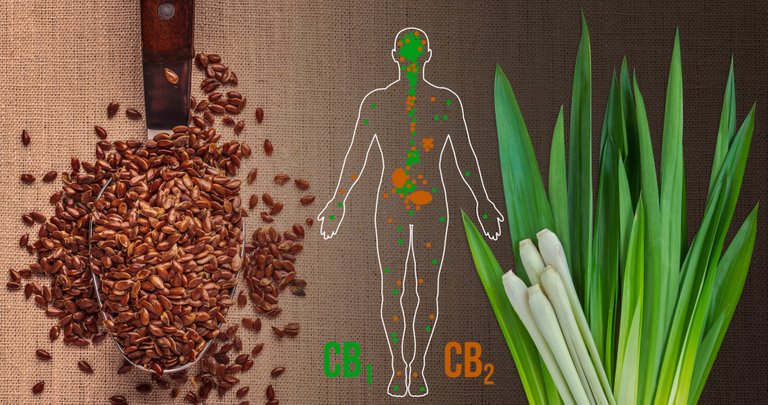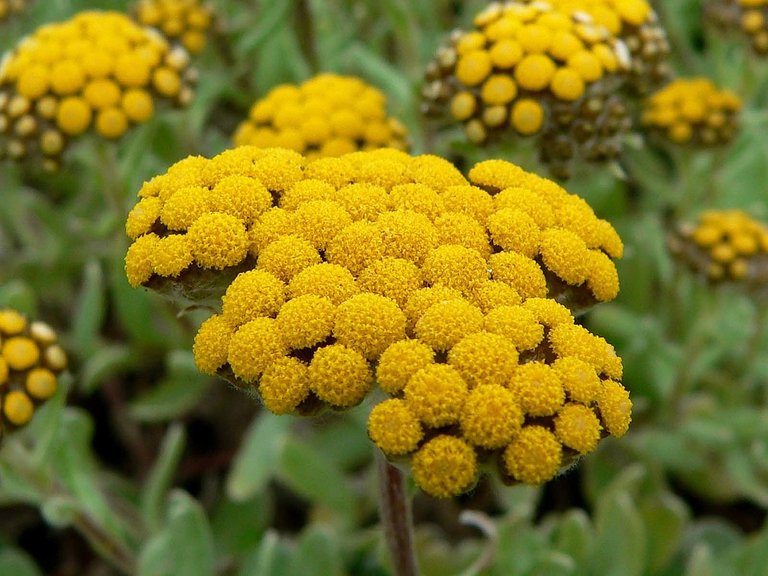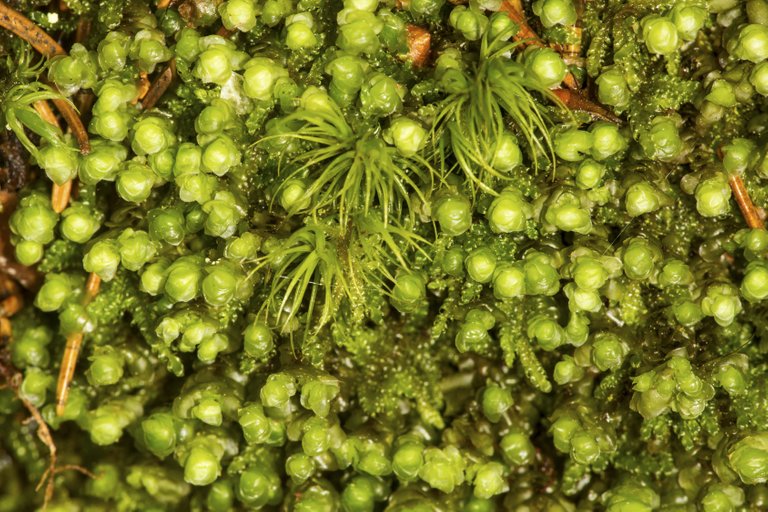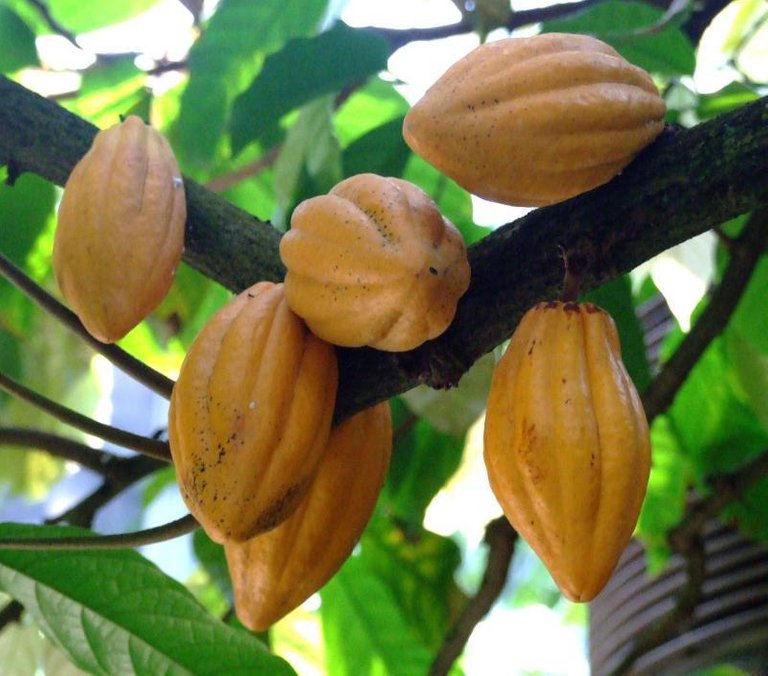For years it has been considered that cannabis is the only plant that have cannabinoids, a chemical compound interacting with a large regulatory system in our body, known as the endocannabinoid system. It is a group of endogenous cannabinoid receptors located in the brain and in the central and peripheral nervous system of mammals which participate in various physiological processes including appetite, pain, mood and memory, and as a mediator in the psychoactive effects of cannabis.
In order to better understand the action of the endocannabinoid system, scientists and botanists have been studying plants for cannabis with cannabis for years, and have discovered that cannabis is not the only plant that contains such properties.
What are Cannabinoids?
Cannabinoids are lipid molecules that, to a certain extent, affect cannabinoid receptors. They are mainly created by plants, but also by the human body, and can also be synthesized in a laboratory. Cannabinoids that produce plants are called phytokanabinoids, those that create the human (or animal) body are endocannobinoids, and those created in the laboratory are known under the simple name of cannabinoids. Read about human endokanabinoid system details in the Human Body has an endocannobinoid system - Studies and basics of discovery.
Most of us are familiar with conventional cannabinoids such as THC, CBD, THCV and CBC. For long time they have been considered to be the only ingredients that will affect cannabinoid receptors. Years of research have shown that more than 120 ingredients will act on these receptors, some of them are ingredients that don't have same structure as cannabinoids.
What are canabimimetics?
Canabimimetics are unusual cannabinoids that mimic the biological activity of common cannabinoids although they do not share the same structure with them. Today it is known that dozens of different ingredients directly or indirectly affect the endocannabinoid system and also affect other important biological transmission message systems such as opioids and serotonin and dopaminergic signaling systems.
Some examples of cannabimimetics:
NAE and N-alkylamide-NAE include N-arachidonoylethanolamines (more commonly referred to as anandamide, a biological compound that most resembles THC activity because it acts directly on receptors), N-palmitoylethanolamine (PEA), N-linoleoylethanolamide (LEA) and N-oleoylethanolamines (OEA).
Salvorin A - the main ingredient of the psychoactive plant species Salvia divinorum. It is interesting this ingredient does not work with the usual cannabinoid receptors, but with a tertiary cannabinoid receptor that are formed only in the conditions of inflammation. Tertiary cannabinoid receptors also acts as a kappa-opoid receptor for which basic function is regulation of pain.
Mircen - This is another important terpens found in cannabis, which at high doses have sedately affect. Mircen activate opioid receptors. For now, it is not yet classified as cannabinoid, although it definitely creates "high" feeling.
Here are the six plants that either contain cannabinoids, cannabimimetics or affect the endocannabinoid system and some of its therapeutic properties. Note that plants that are not psychoactive and do not contain THC, but act on the endocannabinoid system, helping to solve stress, anxiety and pain.
Echinacea
This plant can help from cold to reducing symptoms of anxiety, fatigue, arthritis, migraine and other diseases. Depending on the species, the echinacea will contain cannabinoids and cannabimimetics that are slightly different from those in cannabis, but still affect the endocannabinoid system.
Echinacea cannabinoids mainly work on CB2 receptors, those that regulate the immune system, pain and inflammatory processes. In cannabis, THC is what will stimulate CB2.
Acmella oleracea
Acmella oleracea is a plant of Amazone, known for its healing effect on toothache, mainly because it successfully blocks the feeling of pain at the ends of the nerve. Its cannabinoid compound also acts on CB2 receptors.
Helichrysum umbraculigerum
This plant, originating in South Africa, contains a large amount of cannabis (CBG) that works against depression, stabilizes mood and has anti-inflammatory and anti-inflammatory properties. Some african tribes burn this plant to create a smoke that has a psychotropic effect similar to other cannabinoids.
Radula Marginata
This plant originate from New Zealand. It contains a large amount of acid that greatly resembles THC. It is believed to bind to CB1 receptors, just like THC, although it is not known if it acts psychoactive. What is known about Radula Maginata is it's ability to treat bronchitis, gallbladder and urinary bladder.
Theobroma cacao
It is known that the cacao contains many healing properties, but it will affect the cannabinoid system by deactivating the enzyme called FAAH, which usually destroys the endocannabinoid anandamide - the natural body version of THC. So, eating natural dark chocolate increases the amount of anandamide in the brain because FAAH is then less active. The result is similar to smoking cannabis - it creates relaxation and feeling of happiness even though to a lesser extent compared to the consumption of cannabis.
Piper nigrum
Beta-cariofilen (BCP) is terpen that is abundant in black pepper which is acting the same as a cannabinoid. BCP has a therapeutic effect on reducing inflammation. Recent research suggests that it has a positive effect on the treatment of arthritis and osteoporosis, as well as cancer.
Other plants
There are plenty of terpen herbal sources such as beta-cariofilen and mirth, although of course some sources are better than others. Mircen is found in extremely high concentrations in hops oil (in some species it makes up to 80% of the volume) and in the lemon, lemon grass, mother's milk and verbena. It is also found in cloves, rosemary, cumin, oregano, basil, lavender, cinnamon and many other plants.









So you can smoke all of these
Just try it and please give us report :)
Peace, Abundance, and Liberty Network (PALnet) Discord Channel. It's a completely public and open space to all members of the Steemit community who voluntarily choose to be there.Congratulations! This post has been upvoted from the communal account, @minnowsupport, by neo-wiza from the Minnow Support Project. It's a witness project run by aggroed, ausbitbank, teamsteem, theprophet0, someguy123, neoxian, followbtcnews, and netuoso. The goal is to help Steemit grow by supporting Minnows. Please find us at the
If you would like to delegate to the Minnow Support Project you can do so by clicking on the following links: 50SP, 100SP, 250SP, 500SP, 1000SP, 5000SP.
Be sure to leave at least 50SP undelegated on your account.